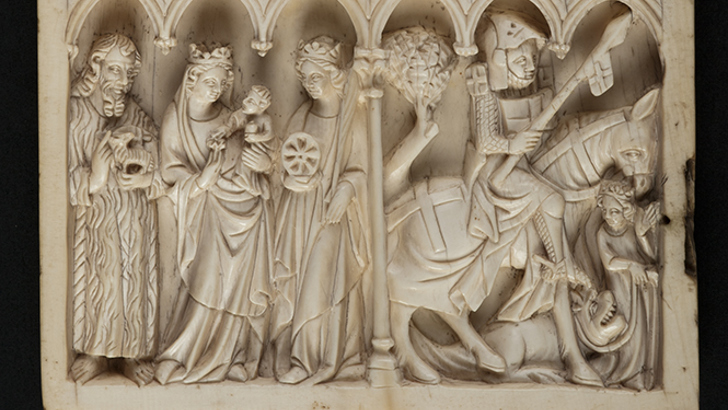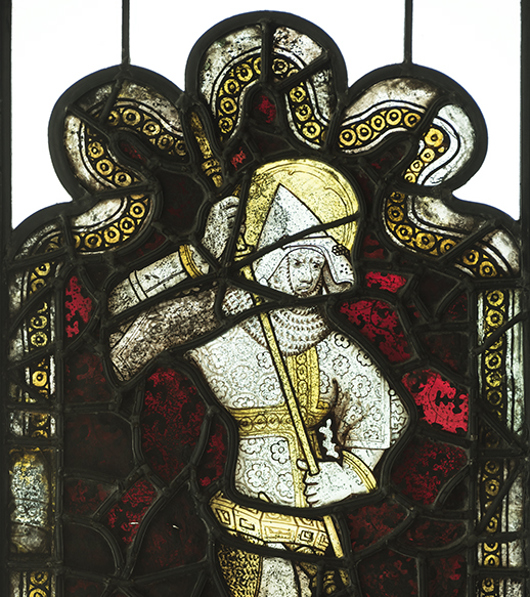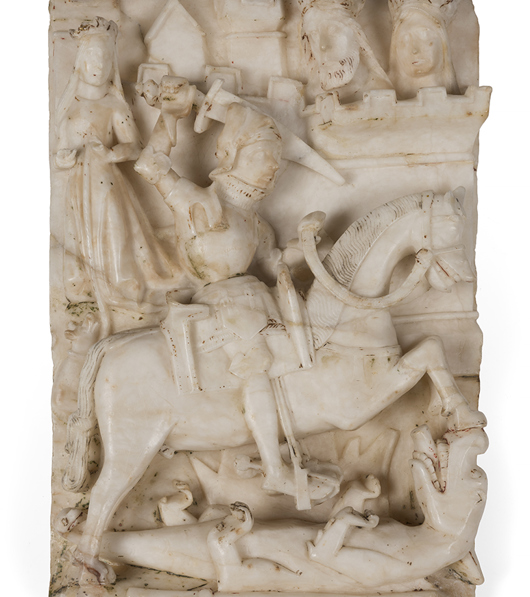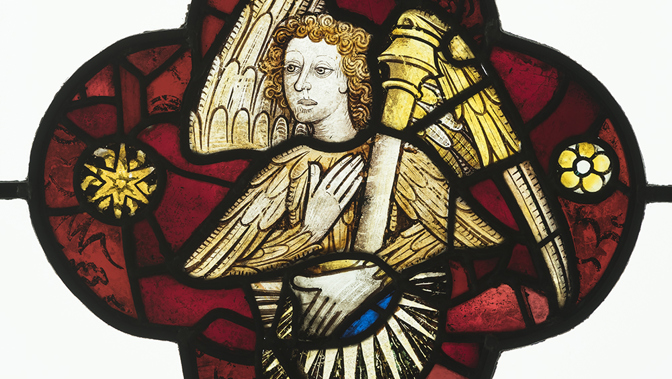The enduring story of St George and the Dragon

To mark St George's Day on 23 April, Glasgow Museums' Curator of Arms and Armour, Ralph Moffat shares some insights on these remarkable objects featuring the saint.
'‘Cry God for Harry, England, and Saint George!’
Shakespeare puts these rousing words into the mouth of King Henry V before his famous victory at the Battle of Agincourt in 1415. But why would this warrior-king shout out the name of a saint to instil courage in his men for the fight? We know George as the patron saint of England but he was much, much more than that. In medieval Europe he was the protector of all warriors in battle.
Thanks to the generosity of Sir William and Constance, Lady Burrell, we have spectacular objects that show St George in his fine armour ready to take on the dragon and save the princess. The artists portray him as a fighter of their own time.
The stained glass below was made in England around 1400. The saint is well protected in plate armour with sections of mail to guard any chinks.


In the late-fifteenth-century English alabaster carving above, he sweeps in on his charger, sword in hand. His right shoulder plate (pauldron) has a section that is specially shaped to allow the right arm to move more freely in the fight. That he has gilt spurs on his heels shows us that he is not only a saint, he is also a chivalrous knight.

This intricate ivory diptych above was crafted in Paris in the early 1300s. Most of St George's armour is mail but some plate armour protects his legs. The artist has also employed the symbolism of heraldry. A distinctive cross is emblazoned on the ailettes on his shoulders, on his shield, the horse trapper, and the pennant on his lance. Ailettes (meaning ‘little wings’) are flat pieces of decorated leather or firm fabric.
Saint George bears an instantly-recognizable red cross on a white background, (argent a cross gules in the language of heraldry known as blazon). A medieval warrior going into battle would call on his aid to grant them victory. They would understand that the red represented the blood that the saint had shed as a martyr – he was executed for refusing to give up his faith. The cross represents the wooden structure on which Jesus had been tortured to death – a symbol sacred to Christians (top right of image).
Keep an eye out for the saint’s cross. You’ll find it not just in England but from Georgia to Lisbon, Milan to Ethiopia – it’s much easier to spot than a dragon!
Banner image: Detail from the ivory diptych showing St George on his horse with the dragon on the ground below.

